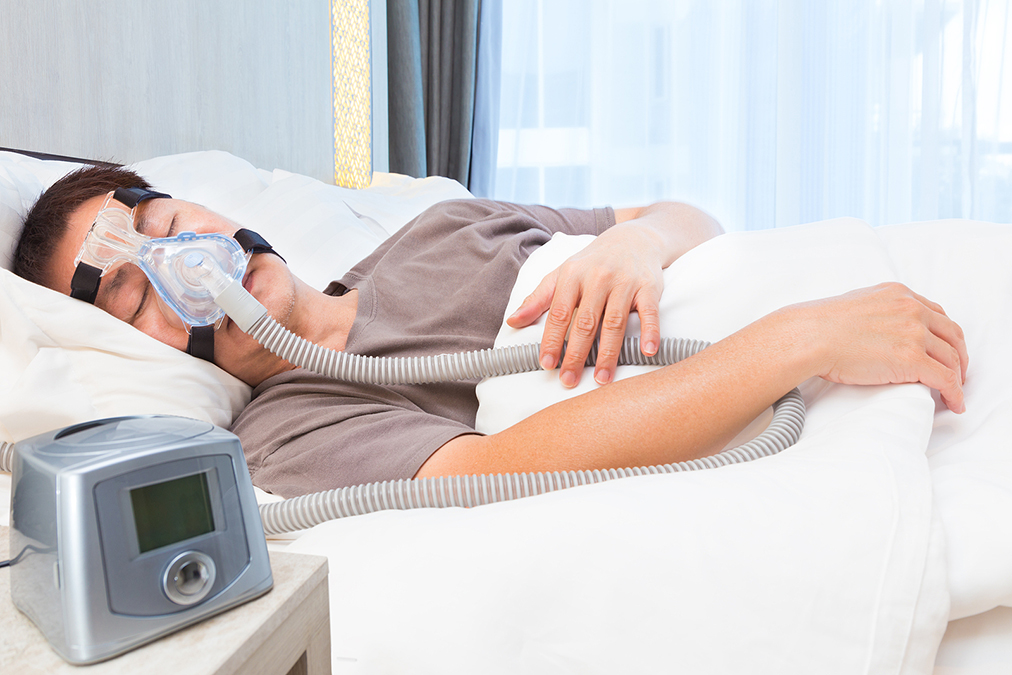 Obesity is commonly believed to be one of the strongest predictors of sleep apnea. And losing weight is therefore the answer, right?
Obesity is commonly believed to be one of the strongest predictors of sleep apnea. And losing weight is therefore the answer, right?
Not necessarily says a new study published in Diabetes, Metabolic Syndrome and Obesity.
There are many ways to define the categories of overweight and obese, but one of the most common is the BMI.
BMI is a number calculated by dividing your weight in kilograms by the square of your height in meters.
It provides a general idea of whether your weight falls within a healthy range for your height.
But there is one big problem with BMI.
It doesn’t distinguish between muscle and fat. Muscle is heavier than fat, so people with a lot of muscle may have a high BMI in the obesity category even if they have a low body fat percentage.
So fat and fat distribution could be even more important than weight in tackling this sleep breathing disorder.
As a result, they wanted to find out two things. First, which body measurements are especially strongly linked to sleep apnea and, second, which measurements contributed the most to an improvement in sleep apnea symptoms after weight loss.
Their study was done in two phases. All the participants were overweight or obese adults. All of them were monitored while sleeping in the laboratory and their body measurements were recorded.
The first phase analyzed data from 137 people to see which body measurements were linked to the severity of sleep apnea. They were participating in weight loss studies conducted by other researchers outside this study.
The second phase focused on 60 people with sleep apnea who went through a weight loss program controlled by these researchers to see how their sleep apnea improved.
The results were clear.
-
1. In the first phase of the study, waist circumference, fat mass, and BMI all contributed to the severity of sleep apnea symptoms.
2. After the weight loss program, those whose waist circumference decreased the most experienced the largest improvement of their sleep apnea symptoms.
This means that reducing waist circumference is the best way to tackle sleep apnea.
Accordingly, you don’t have to struggle with the near impossible task of reducing neck circumference specifically. It also means that you can build those muscles without having to worry about sleep apnea.
The same strategies that help you to lose fat will generally reduce your waist circumference too.
The one thing that all attempts to treat sleep apnea have in common is to open up your breathing passages.
And the most effective way to open your breathing passages is easy three-minute throat exercises. You can learn these throat exercises here and rid yourself of snoring and sleep apnea as soon as tonight…

 Multiple Sclerosis
Multiple Sclerosis Banishing Bronchitis
Banishing Bronchitis Gum Disease Gone
Gum Disease Gone Overcoming Onychomycosis
Overcoming Onychomycosis Neuropathy No More
Neuropathy No More The Prostate Protocol
The Prostate Protocol Brain Booster
Brain Booster
 Ironbound
Ironbound
 Solution for Shingles
Solution for Shingles
 The Bone Density Solution
The Bone Density Solution
 The Ultimate Healing Protocol
The Ultimate Healing Protocol
 The Parkinson's Protocol
The Parkinson's Protocol
 The Chronic Kidney Disease Solution
The Chronic Kidney Disease Solution
 Overthrowing Anxiety
Overthrowing Anxiety The Fatty Liver Solution
The Fatty Liver Solution The Hypothyroidism Solution
The Hypothyroidism Solution
 The End of Gout
The End of Gout The Blood Pressure Program
The Blood Pressure Program
 The Oxigized Cholesterol Strategy
The Oxigized Cholesterol Strategy
 Stop Snoring And Sleep Apnea Program
Stop Snoring And Sleep Apnea Program
 The Arthritis Strategy
The Arthritis Strategy The Vertigo & Dizziness Program
The Vertigo & Dizziness Program The 3-Step Diabetes Strategy
The 3-Step Diabetes Strategy Hemorrhoids Healing Protocol
Hemorrhoids Healing Protocol The Erectile Dysfunction Master
The Erectile Dysfunction Master Weight Loss Breeze
Weight Loss Breeze The IBS Program
The IBS Program The Insomnia Program
The Insomnia Program The Migraine and Headache Program
The Migraine and Headache Program The Neck Pain Solution
The Neck Pain Solution The Menopause Solution
The Menopause Solution The Ejaculation Master
The Ejaculation Master The TMJ Solution
The TMJ Solution The Acid Reflux Solution
The Acid Reflux Solution The Fibromyalgia Solution
The Fibromyalgia Solution The Psoriasis Strategy
The Psoriasis Strategy